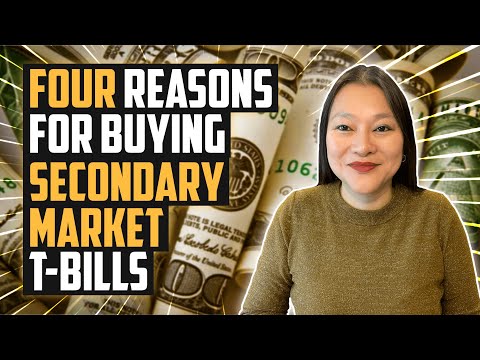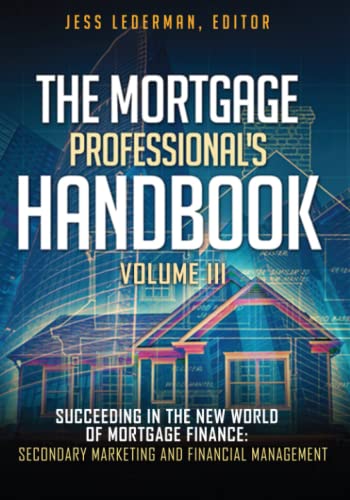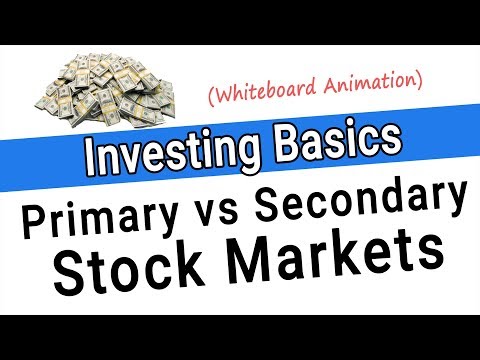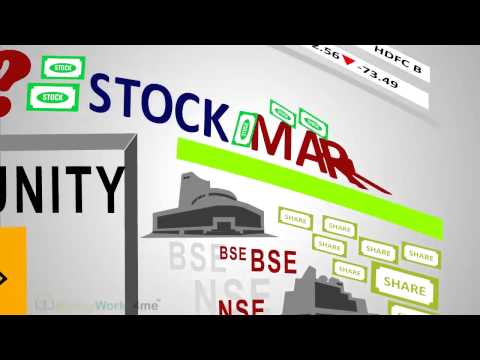Secondary Market Explained: The Bedrock of Home Loan Availability
What Is a Secondary Market? The Fundamentals
Alright, let’s kick things off with a quick primer on the secondary market. What is a secondary market, you ask? Simply put, it’s the playground where securities, think stocks and bonds folks, change hands after they’ve been issued in the primary market. That’s original owners selling to new buyers, without the security issuers being involved in the transaction.
Now, this concept isn’t a newfangled idea. The secondary market has been the backbone of the financial system for ages, providing crucial liquidity and enabling price discovery through supply and demand dynamics. It’s the place where you can nab or offload your securities faster than a New York minute.
You’ve got different flavors of secondary markets: the big-league stock exchanges like NYSE and NASDAQ, where shares do a high-stakes dance, and the over-the-counter (OTC) market, a more informal and versatile affair sans physical trading floor.

Inside the Secondary Mortgage Market: A Deep Dive
Here’s where we zero in on the secondary mortgage market, a key piece of the home loan puzzle. This specialized market traffics in home loans, not stocks, and it’s where loans and servicing rights catch a second wind.
The heavy hitters in this arena, keeping the game fair and full of opportunities, are government-sponsored enterprises, namely Fannie Mae and Freddie Mac, alongside Ginnie Mae, and let’s not forget the private power players. Their big gig? Packaging mortgages into securities and ensuring investors a slice of the American Dream, with interest.
Mortgages hop into the secondary market after origination, in a process called securitization, making sure lenders have the funds to lend anew. It’s a cycle that keeps credit a-flowing and dreams of homeownership alive.
The Mortgage Professional’s Handbook Succeeding in the New World of Mortgage Finance Secondary Marketing and Financial Management

$69.95
“The Mortgage Professional’s Handbook: Succeeding in the New World of Mortgage Finance, Secondary Marketing, and Financial Management,” is an indispensable resource for industry insiders looking to deepen their understanding of the rapidly evolving mortgage finance sector. This comprehensive guide tackles complex themes within secondary marketing and financial management, bridging the gap between introductory knowledge and high-level strategic thinking required for success today. It delves into advanced topics such as risk management, regulatory compliance, and the latest in financial technology innovations, empowering professionals to adapt and thrive in a competitive landscape.
Each chapter of the book breaks down intricate concepts into digestible segments, making it accessible for professionals at various levels, from entry-level associates to seasoned executives. The handbook offers practical advice, supported by real-world examples, to illustrate effective strategies for managing mortgage portfolios, navigating the securitization process, and optimizing lending operations. It serves not only as a learning tool but also as a reference manual for professionals seeking to reference industry best practices and stay ahead of emerging trends.
As a bonus, the book includes insights from leading experts in mortgage finance, granting readers a glimpse into the minds of successful practitioners and thought leaders. To ensure that professionals are equipped to face future challenges, the handbook also forecasts potential industry shifts and provides a roadmap for continuous professional development and skill enhancement. “The Mortgage Professional’s Handbook” is more than a guideâit’s an investment in a professional’s future, ensuring they are well-prepared to navigate the nuances of mortgage finance with confidence and expertise.
The Co-Dependence of Primary Market and Secondary Market Dynamics

The Cycle Begins: The Primary Market’s Role
The primary market in home loans does the groundwork: lenders craft and dish out mortgages to homebuyers, using their own funds or a line of credit. This direct connection means they shake hands with borrowers, assessing credit and crafting terms tailored like a bespoke suit.
Beyond Origination: How the Primary Market Leverages the Secondary Market
Once a loan sets sail from the safe harbor of origination, it enters the vast ocean of the secondary market. Here’s the kicker: lenders love this shift because it frees up their balance sheets. Think of it like clearing out the garage to make room for new stuff.
For lenders, this move is nothing short of a lifeline, pumping diversity into mortgage offerings and adding a dash of spice to interest rates. They can craft more loans, steadier, and often with better terms thanks to the liquidity this market churns out.

| Attribute | Description |
| Definition | A market for buying and selling previously issued securities like stocks, bonds, and derivatives. |
| Contrast to Primary Market | Secondary: Trades existing securities. Primary: Issues new securities. |
| Key Participants | Investors, traders, brokers, and market makers. |
| Examples of Markets | New York Stock Exchange (NYSE), London Stock Exchange (LSE), NASDAQ, National Stock Exchange (NSE). |
| Trading Types | Auction market (where prices are determined through bidding) and dealer market (where dealers quote prices). |
| Functionality | Provides liquidity allowing for easy buying/selling; facilitates price discovery based on supply and demand. |
| Pricing | Determined by market forces of supply and demand, rather than issuer-set prices. |
| Importance to Economy | Promotes more efficient and safe capital allocation, benefiting the overall economy. |
| Benefits for Investors | Provides liquidity, enabling quick trades; facilitates smaller investments; safety and security in transactions. |
| Regulatory Aspect | Exchanges oversee activities to curb illicit behavior and establish a secure environment for trading. |
| Location | Located at specified places, typically within financial districts for major cities worldwide. |
Secondary Market Mechanisms and Their Direct Impact on Home Loans
Facilitating Liquidity: The Secondary Market at Work
Liquidity is the secondary market’s middle name. Through securitization, mortgages transform into accessible assets faster than a superhero. This liquidity is the secret sauce that adds zest to lending and, consequently, stability to housing markets the nation over.
Rates and Risks: A Balancing Act
Interest rates and the secondary market go together like peas and carrots. When investors gobble up mortgage-backed securities, rates tend to smile and stay low. And with entities like Fannie and Freddie offering credit guarantees, they put a floor on risk, making the market steadier than a tightrope walker.
Historical precedents show how market squalls can rock the boat of home loans, affecting everything from rates to availability. It’s a balancing act, where stability and savvy play leading roles.
Marketing Fashion Second Edition Strategy, Branding and Promotion

$3.99
Marketing Fashion Second Edition Strategy, Branding and Promotion is a comprehensive guidebook that serves as an essential resource for students and professionals in the fashion industry seeking to deepen their understanding of the integral aspects of marketing within this dynamic sector. This second edition has been meticulously updated to reflect the latest trends and practices in fashion marketing, emphasizing digital innovations and global perspectives. Hinging on a trifecta of strategy, branding, and promotion, the book offers a holistic view of how these components interact and contribute to the success of fashion brands in the competitive market.
Delving into strategic planning, the book walks readers through the process of developing a robust marketing strategy tailored to the unique demands of fashion consumers. It seamlessly interweaves case studies of successful fashion brands with theoretical concepts, allowing readers to gain a practical understanding of market segmentation, positioning, and the ever-evolving consumer behavior. Branding is covered extensively, examining the power of brand identity, narrative, and image in establishing a strong presence in the market. The text offers tools and frameworks for creating compelling brand campaigns that resonate with target audiences.
When it comes to promotion, Marketing Fashion Second Edition Strategy, Branding and Promotion provides an in-depth exploration of traditional and digital channels. It covers the execution of integrated marketing communications, from public relations and advertising to social media and influencer partnerships, ensuring that readers are up-to-date with the methods for reaching consumers effectively. Throughout the book, emphasis is placed on sustainability and ethical considerationsâa reflection of the increasing emphasis on responsible marketing in the fashion industry. With its clear structure and actionable insights, this edition is not only an educational resource but also a strategic blueprint for those aspiring to thrive in the world of fashion marketing.
Unraveling the Complex Relationship Between Home Loan Access and the Secondary Market
Loan Availability and the Role of the Secondary Mortgage Market
Ever wonder how different folks, from different strokes, all manage to nab home loans? The secondary market’s the epicenter of this democracy in lending, opening doors wide for homeownership throughout various socioeconomic terrains.
It’s a domino effect that echoes through approval rates and credit qualifications, making clear why keeping an eagle eye on secondary market trends is key to understanding loan accessibility shifts.
Innovations and Regulations Shaping the Future
Advancements in tech are shaking up the secondary market, making it more accessible, efficient, and transparent. At the same time, the rulebook’s always evolving, with regulatory tweaks setting the stage for what borrowing’s going to look like down the road.
Keeping an eye on industry experts, who seem to have crystal balls at their disposal, can give us a sneak peek into what the next waves in the secondary market might be.

Crafting a Sustainable Mortgage Ecosystem: Secondary Market Implications
Sustainability and Stability: Lessons from the Secondary Market
Steady as she goes: that’s the creed of the secondary market. By buying and underpinning loans, it offers a cushion against chaos, setting up a firm groundwork for a stable mortgage biz.
Legislation and best practices holding this system together are like guardian angels, warding off calamities of past and future. Yet, the quest for an ever-solid secondary market is ongoing.
Perspectives on Consumer Impact: The Secondary Market Effect
Every cog in the secondary market wheel reverberates right down to the individual homeowner. Suzy from Arizona, who’s savvy about the Arizona sales tax rate, can tell you how market dynamics played a part in her getting a fair mortgage rate.
This is why it’s essential for you, dear reader, to arm yourself with knowledge about these high-flying financial dealings. After all, forewarned is forearmed.

The Secondary Market Mosaic: Synthesizing Industry Insights
Taking it all in, the secondary market’s influence stretches far and wide, shaping the mortgage world in ways both overt and subtle. By distilling its complexities, we arm players across the board with the playbook they need to thrive.
It’s about vision—anticipating shifts and swells in the secondary market’s tides to keep your ship sailing smooth in the mortgage ocean.
ImagineHaven Fresh Market Doorway Kids Playhouse with Drawstring Bag, Cotton Canvas Kid Play House Fits Most Doors Seconds to Set Up or Put Away

$29.99
The ImagineHaven Fresh Market Doorway Kids Playhouse with Drawstring Bag is a magical addition for nurturing your child’s imagination and love for play. Designed to fit most standard door frames, this playhouse is meticulously crafted from high-quality cotton canvas, ensuring both durability and softness to the touch. Its colorful Fresh Market theme entices little ones to engage in hours of imaginative play, pretending to be shopkeepers, customers, or just enjoying the cozy nook of their very own market stall. With its inviting design complete with a roll-up door and display window, this playhouse turns any doorway into an enchanted play space.
Setting up this enchanting abode takes mere seconds, thanks to its intuitive, easy-to-hang design. The included adjustable tension rod makes for a secure fit within the doorway, so parents can rest easy knowing the playhouse stays firmly in place during active play. When playtime is over, the house simply collapses down and can be stowed away in its matching drawstring bag, making it an ideal solution for compact living spaces. The straightforward, no-tools-required assembly means this playhouse is perfect for on-the-go play, easily transitioning from indoor to outdoor venues.
The ImagineHaven Fresh Market Doorway Kids Playhouse is not only a source of endless fun but also a developmental tool that stimulates creativity. The detachable playhouse allows children to personalize their market by drawing on and customizing the cotton canvas with safe, washable markers or paints, thus encouraging artistic expression. Easy to clean and maintain, it is designed to adapt and grow with your child, providing a continual source of imaginative play. Whether it’s a birthday, holiday, or just a surprise treat, this playhouse is a wonderful gift that opens up a world of imagination for any child.
Beyond the Fine Print: Embracing the Secondary Market’s Role in Home Financing
Stepping back, the secondary market’s intricacies, for the layperson, translate into the nuts and bolts of home financing—decoding this black box can shift dreams of homeownership from fuzzy to HD.
Picture this: new models, born of innovation, reshaping the secondary market as we know it. And it’s not just a pipe dream; with the expert advice from gurus like Joshua Davis, navigating these waters can be smooth sailing.
In rounding off, it’s time we all embrace the influence of the secondary market. By getting wise to its ways, you, as consumers or industry honchos, can steer through its currents with the grace of an old sea captain.
Now, folks, remember this: just like understanding the lyrics of a “Red Velvet wendy” tune means more than just bobbing to the beat, comprehending the secondary market means more than eyeing your monthly mortgage statement. It’s about having the savvy to see beyond the moment, ready to face tomorrow’s market swells with confidence and poise.
Just as we marvel at a “Donald Trump photo With young boy at grave site“, it’s the deeper stories and the implications that capture our attention and stir the soul. Similarly, the secondary market may seem distant, but its effects hit close to home, shaping our daily lives in the real estate realm.
Moreover, like being clued-up on your local “property tax Indiana” rate, it’s the wise homeowner who stays attuned to secondary market currents, ensuring they’re not caught off-guard when the financial winds shift.
Armed with knowledge, you’re better positioned to navigate the ever-changing landscape of home buying, where rates, regulations, and market forces all converge.

Ride those waves, my friends, and may your mortgage journey be as smooth as glass.
Did You Know? Unveiling the Enigmas of the Secondary Mortgage Market
Who’s Behind Curtain Number Two? Meet the Secondary Market Players
Alright folks, fasten your seatbelts and prepare to dive into the curious world of the secondary mortgage market! This is the backstage arena where your home loan’s destiny takes an unexpected twist. Picture this: after you’ve signed on the dotted line for your cozy abode, your mortgage might secretly slip into the hands of another financial soiree without you even noticing. The culprits behind these dealings? None other than mortgage industry giants like “Fannie Mae” and “Freddie Mac”—they’re like the Houdinis of the housing sector, making your mortgage disappear and reappear in the hands of investors.
A Global Hopscotch with Your Mortgage
Now, don’t get dizzy, but your mortgage could be more traveled than your backpacking cousin. Once it enters the secondary market, it might hop across states, dash through big banks, or leap over international borders! It’s a high-stakes game of hopscotch, and your humble home loan is the pebble. Institutions like “Ginnie Mae” ensure that while your loan globetrots, Uncle Sam’s got a watchful eye on it, guaranteeing your loan stays secure.
Dollars and Cents: Why Your Mortgage Is a Hot Commodity
Hold onto your hats, because it turns out your mortgage might be as coveted as an autographed baseball card at a collectors’ convention. Investors are on the hunt for a steady income, and your monthly payments are their treasure. It’s a classic win-win; you get your dream home, and investors earn from the interest you pay. Quite a nifty trick, right?
The Domino Effect: How the Secondary Market Shapes Your Rates
So, you might be wondering, “What’s in it for me?” Well, let me spill the beans. The secondary market doesn’t just influence who owns your mortgage; it’s like the puppet master pulling the strings on your interest rates! When the secondary market is buzzing, lenders have a grand old time issuing loans since they can offload them quicker than a hot potato. This can lead to lower interest rates for you. That’s right—your wallet might feel a tad heavier!
In the Secondary Market, Every Mortgage Has Nine Lives
Bet you didn’t know that your mortgage could have more lives than a cat stuck in a time loop! When lenders sell off these loans, they replenish their coffers and are ready to lend again. Each time your mortgage lands in new hands, it’s as if it’s been given a fresh start, all beautifully wrapped up in a new investment package for someone to add to their collection. It’s like the never-ending story of finance!
So, there you have it, the fabulously intricate and downright spectacular secondary market—a financial carnival where the rides are loans and the prizes are opportunities for homeowners and investors alike. Keep that in mind next time you send off your mortgage payment; it’s part of a much larger, thrilling roller coaster that helps keep the dream of homeownership spinning round and round!
The Samsara of Secondary Markets

$0.99
“The Samsara of Secondary Markets” is an enlightening book that provides an in-depth exploration of the world of secondary markets – where previously owned or used goods, financial instruments, and other assets are bought and sold. This page-turner delves into the cyclical flow of consumer products, from electronics to vehicles, and financial securities, such as stocks and bonds that have been traded after initial issuance. The author posits a philosophy akin to the concept of ‘samsara’ where the continuous cycle of life, death, and rebirth applies to consumer goods and investment vehicles, offering a fresh perspective on repurposing and the hidden value within these markets.
The book meticulously unveils the mechanics of various secondary markets, explaining how they operate differently from their primary counterparts and why they have become increasingly significant in the global economy. It highlights the importance of secondary markets in providing liquidity, determining the real-time value of goods and securities, and facilitating the democratization of asset ownership. Through a series of case studies and interviews with industry experts, “The Samsara of Secondary Markets” uncovers the strategies used by savvy investors and bargain hunters to navigate these markets successfully.
As readers progress through the chapters, they are introduced to the ethical and ecological implications of secondary market transactions. The author emphasizes the crucial role that these markets play in sustainable consumption and waste reduction, arguing that the successful circulation of goods in the secondary market can be seen as a powerful tool in the fight against planned obsolescence and environmental degradation. “The Samsara of Secondary Markets” is not only a treasure trove of financial insight but also a clarion call for responsible consumption and investment in the modern age.
What is secondary market and example?
Oh boy, the secondary market is where the real action kicks in after the show’s premiere. Think of it like a concert’s encore, where tickets get resold—here, it’s about financial assets swapping hands among investors. A classic example? The stock market, where folks trade shares without the company that issued them lifting a finger.
What is difference between primary market and secondary market?
Now, don’t mix up the primary and secondary markets—they’re like first cousins, similar but with distinct vibes. The primary market is where securities are born, with companies selling directly to investors for the first time, say, through an IPO. Meanwhile, the secondary market is the bustling street market where these securities are traded among investors afterward.
What are considered secondary markets?
As for what counts as a secondary market, you’ll find stocks, bonds, options, and futures all jostling for attention there. It’s everyone who missed the primary market debut trying to snag a piece of the pie.
What is the term secondary market?
The term “secondary market” is just industry slang for the resale market, where securities get a second lease on life as investors trade them back and forth like Pokémon cards.
What is an example of a secondary market product?
Diving into examples, let’s talk about a Charlie-in-the-chocolate-factory golden ticket: your typical stock or bond issued by a big-name company. They’re the belles of the ball in the secondary market, getting passed around from investor to investor.
What are the disadvantages of secondary markets?
But hang on a sec, it’s not all sunshine and rainbows—there are some real bummers about secondary markets. Prices can swing like a yo-yo, liquidity can sometimes dry up faster than a puddle in the Sahara, and oh, the information gap between traders can be as wide as the Grand Canyon.
Who are the major players in the secondary market?
The heavy hitters in this game are the institutions like investment banks, mutual funds, and pension funds, not to mention the army of individual traders duking it out on the trading floor.
Why secondary market is better than primary market?
Some folks argue the secondary market’s the better gig because it’s got more room to dance—with more liquidity, you can jump in and out faster than a cat in a bathtub.
What is an example of a primary market and a secondary market?
Take a trip down memory lane and let’s compare; an example of the primary market is a company’s IPO, where you get your mitts on shares hot off the press. The secondary market? That’s eBay for stocks—the New York Stock Exchange or NASDAQ, where those shares go to find new homes.
How do companies benefit from secondary market?
Companies strike gold with the secondary market as it creates a buzz around their stocks, making them as appealing as a double-chocolate sundae, which can help boost their rep and share value.
Is Ebay a secondary market?
Speaking of eBay, yep, it’s the digital equivalent of a giant garage sale—a poster child for the secondary market of goods, where you can snag anything from vintage tees to nearly-new gadgets.
Why is a stock exchange like NASDAQ considered a secondary market?
And why’s NASDAQ the talk of the town in secondary markets? Because it’s a glitzy digital marketplace where shareholders trade stocks without company interference, like speed dating for investors.
How do I buy bonds in the secondary market?
Now, if you’re itching to buy bonds in the secondary market, just waltz into a brokerage firm or use an online broker. It’s like picking a ripe peach straight from the tree, without the company hassle.
What are examples of secondary market research?
For secondary market research examples, think about scavenging through articles, industry reports, or data compiled by someone else—sort of like rummaging through your neighbor’s garage sale finds.
What are the secondary markets in the US?
The big kahunas of secondary markets in the US? You’ve got the New York Stock Exchange and NASDAQ, where traders hustle and bustle, itching to strike it rich.
Which of the following is an example of secondary market research?
If someone asks for an example of secondary market research, toss ’em findings from a Pew Research report or stats from government databases—it’s like using your cousin’s math homework as a study guide.
What is a secondary market quizlet?
And finally, if you stumbled upon secondary market on Quizlet, you’d find it defined as the financial playground where previously issued securities are traded among investors—a spot that’s as popular as a Friday night football game in a small town.



